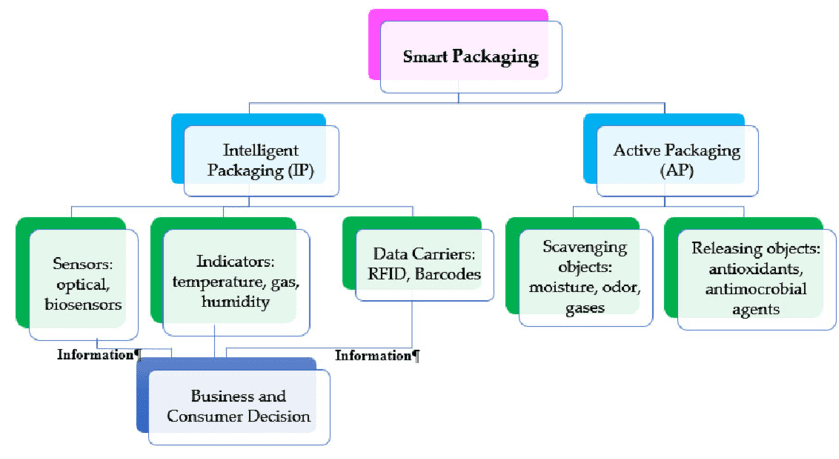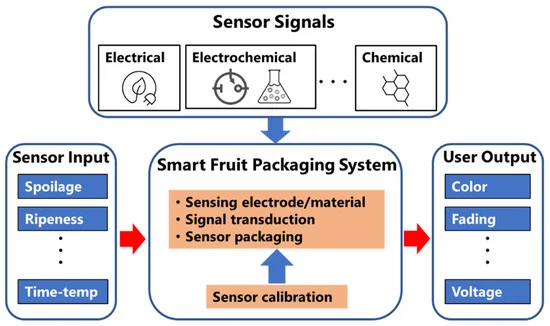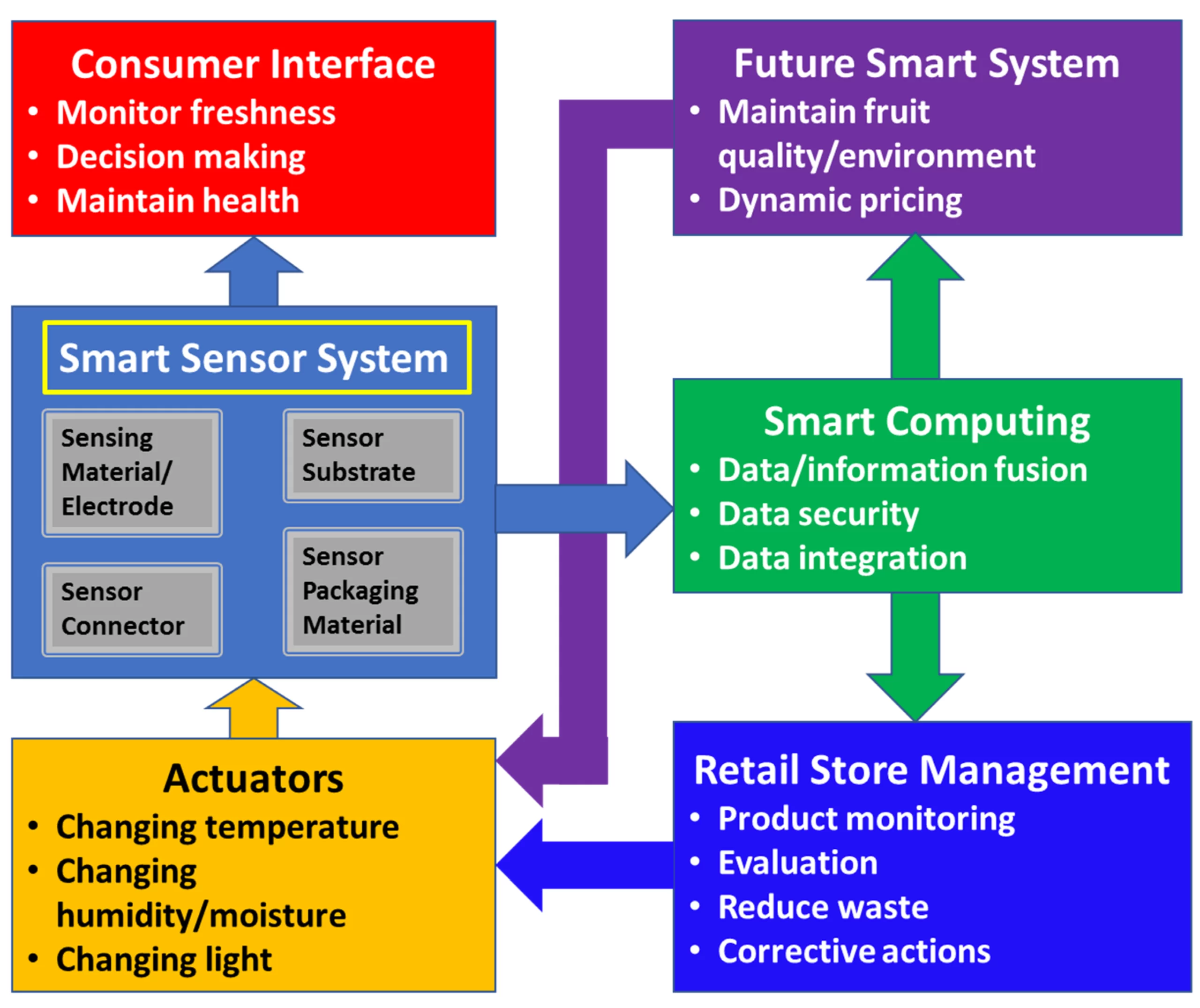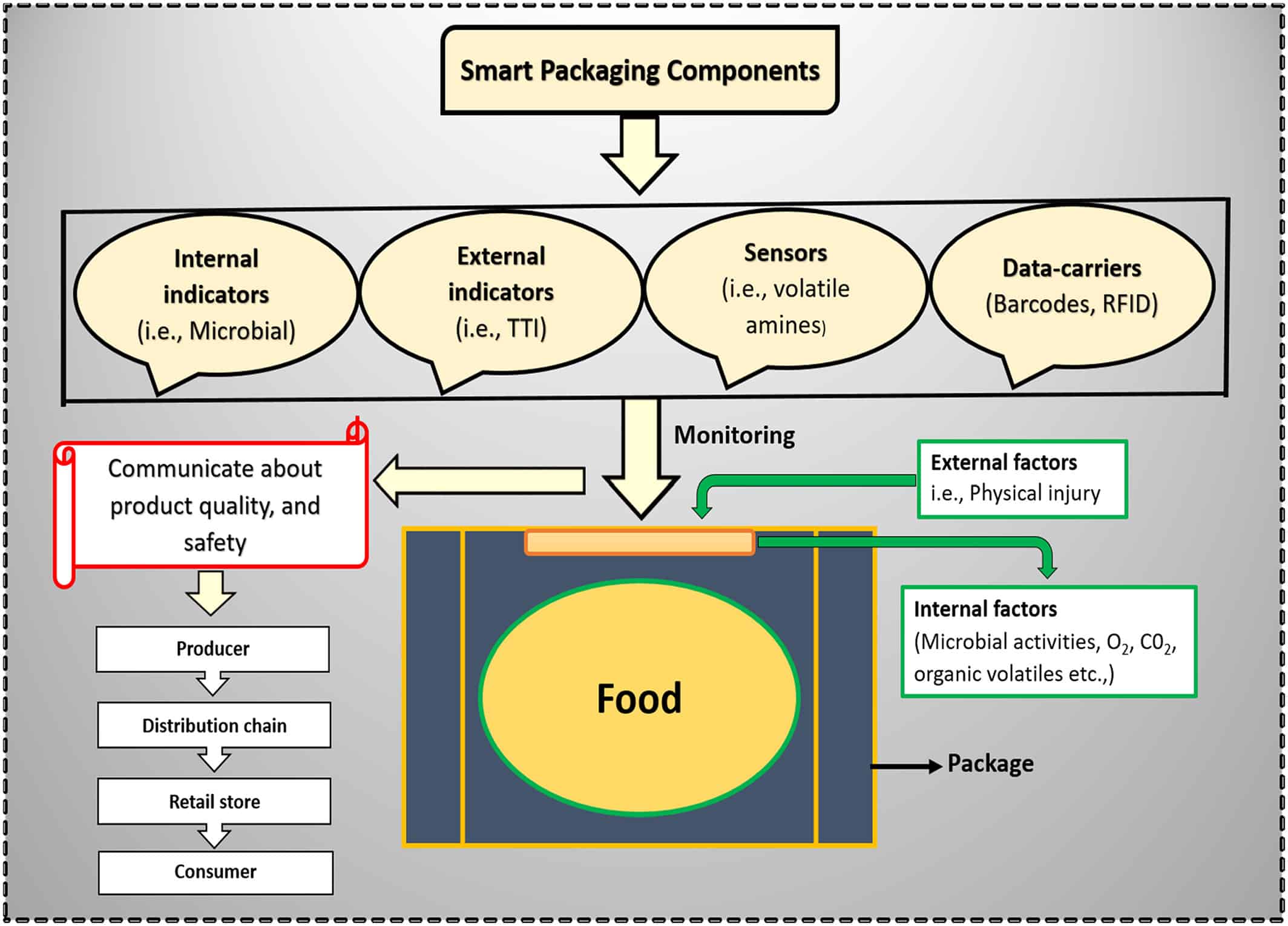Introduction:
Today, due to the importance of issues such as paying attention to public health, environmental protection by reducing food waste and solving some social challenges, research and development on smart packaging has found a special place in the world and many researchers are working in this field.
Smart food packaging is the latest technology in the field of food packaging. That is why significant progress has been made in the field of smart packaging in the world.
Researchers have also made advances in the production of smart packaging, including carbon dioxide-sensitive labels, oxygen-sensitive labels, time-temperature labels, and labels sensitive to food pH changes.
Due to their special identifiers, these types of packages can detect environmental conditions and changes in food and provide information to the consumer about the quality and health or unhealthiness of food.
Smart food packaging does not act directly to increase the shelf life of food, but rather provides food quality information to food supply chain stakeholders.
For example, an intelligent packaging system can show the consumer that a food is fresh or expired, thereby notifying the consumer or producer.

The concept of transport of preservatives to food and the communication role of packaging in facilitating transport are related to smart packaging.
Smart materials are artifacts that monitor the storage conditions of packaged materials and the environmental conditions of food, which allows us to provide accurate information about the storage conditions and environment of packaged foods.
Among the factors that smart packaging can consider are: Temperature, time, pH, factors affecting food spoilage (bacterial growth) and ….
In contrast to active ingredients, there are intelligent ingredients that are not intended to be combined with food ingredients and their environment.
Intelligent packaging is to reduce the impact of risk, control critical points of food products and also have systems for quality analysis of these products to timely and accurately detect food and unsafe foods, identify health risks and potential poisonings and provide solutions to reduce or eliminate the occurrence of them exist, are fixed and designed.
It is also very effective in identifying processes that strongly affect the quality characteristics and efficient improvement of the final product quality.
Types of sensors used in smart packaging:
A sensor is a device used to detect, locate, or quantify energy or signal transmitting material to detect or evaluate its physical and chemical properties.
Most sensors have two basic and important parts: Receiver and converter.

1) Biosensors:
These types of sensors are used to record and transmit data related to biological reactions.
These types of sensors are composed of organic materials or biological materials such as enzymes, hormones, nucleic acids, antigens of microbes and bacteria, detectors, etc. Converters can also be: Optical, acoustic or electrochemical split.
2) Gas sensors:
These sensors are used to detect the presence of gaseous analytes in food packaging, including oxygen sensors, carbon dioxide sensors, water vapor sensors, ethanol, metal oxide semiconductor field effect transistors, organic conductive polymers, and sensors.
These systems operate on the basis of reducing or eliminating brightness or absorption changes caused by direct contact with the analyte.
The method of receiving chemical-optical signals can be divided into three types: System-based fluorescence using pH-sensitive index, absorption-based absorption, colorimetric perception, and energy transfer using phase fluorescence detection.
3) Chemical sensors:
These types of sensors are capable of detecting the presence, activity, composition and concentration of certain chemicals or gases. Detection by these sensors is done by desorption of the environment.
The materials used in these sensors can generally be classified as nanocarbon materials such as: Nanoparticles, graphite, nanofibers and nanotubes that have special and unique physical and chemical properties.
Nano-sensors can also be used to detect pathogens, chemical contaminants, food spoilage and alter its properties.
Types of smart packaging indicators:
1) Product novelty indicators in smart packaging:
These indicators can provide complete information about chemical changes or bacterial and microbial growth. For example, the reaction between metabolites resulting from microbial growth and the indicators collected in the package provides important information about the microbial quality of the product.
In 1999, COX Technologies, USA, attempted to launch Fresh tag color tags that react with volatile amines during storage of fish and seafood. Production of this product was stopped in 2004 due to problems in various directions.
2) Temperature-time index in smart packaging:
Temperature is one of the most important environmental factors to determine the kinetics of chemical, physical, bacterial and microbial spoilage in food products.
Temperature and Time Indicators Useful information on whether the current temperature of packaged food will exceed the specified threshold over time or result in the minimum time required for the product to reach above the desired temperature.
3) Cohesion index in smart packaging:
The seepage index in the packaging ensures the cohesion of the packaging throughout the production chain. This type of indicator is more for measuring oxygen concentration and has colors to indicate oxidation and reduction.
Among the disadvantages of systems with this index can be: High sensitivity to oxygen residues and sufficient sensitivity of residual oxygen to these indicators were noted. Oxygen is consumed by the natural microbes in food by penetrating the space inside the package.
Types of intelligent food packaging systems:

1) Oxygen absorber intelligent packaging systems:
Oxygen levels should be monitored in food packages. Oxygen-sensitive foods can also be packaged in map or vacuum packaging. But in such packages, complete oxygen is not removed.
But in intelligent food packaging, after packaging, the remaining oxygen is absorbed in the system and the amount of oxygen is minimized.
2) Intelligent humidity controller packaging:
One of the causes of food spoilage is the presence of food moisture. In intelligent food packaging, the purpose of the humidity regulator is to reduce the activity of water to prevent microbial growth in the product. Moisture-absorbing pads are used to control food moisture.
3) Temperature-time indicators:
Temperature is an important factor for food quality and safety during distribution and storage. The difficulty of controlling and monitoring the temperature of food products has made it difficult to predict their shelf life. These detectors determine whether the product has been exposed to temperatures that have changed in terms of quality, health and safety of the food from the time of production and during storage and distribution and in retail stores and even after purchase by the final consumer, has been created.
4) Gas concentration detection indicators:
These markers are labeled inside the package to show changes in the indoor environment. Most people know the gas concentration testers to check for oxygen and carbon dioxide. These markers are used to ensure the absence of pores in special atmosphere packages such as map packages.
As can be seen, smart packaging is evolving around the world, and researchers are trying to solve the challenges facing a functional product that can be used for a wide range of foods. Also, in terms of production costs, to be economically viable. But to date, despite all the advances in producing an ideal product, they have not succeeded.
Vira Smart Packaging:
Vira’s team has invented a label that is a new tool for monitoring food health moments, from production to consumption, using simulation of the inside of the package, displays the health status by changing the color of the intelligent liquid in the middle of the label.
At present, these smart labels are used for the first time in the world using the simulation method on dairy products, especially milk.
Purpose of smartening expiration date: Reduction of waste, saving the country’s water consumption, better management of transportation and sales of products, prevention of possible poisoning and ease of use for all sections of society.



Having reliable food packing gas analysers into the process would allow you to have the right data needed on special atmosphere packages. Smart packaging is the way to the future.
Thank you very much for your comment and information.
Brilliant post and useful information. I think this is what I read somewhere but I dont know with your experience
Thank you very much for your comment. The article you read is part of the Smart Packaging Review by our team founder in the Viera Smart Label Patent Application.
fantastic content . good job
thanks a lot.